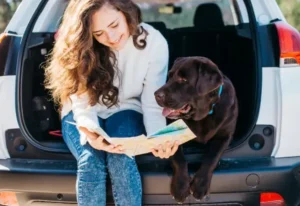Paws, Prepare, Move: A Complete Checklist for Moving with Pets
Moving with pets is smoother when you plan ahead, keep routines steady, and pack a dedicated pet kit for the road. Use this step-by-step checklist to reduce stress for you and your animals from the first planning week to the first days in your new home.


4–6 weeks before
-
Book a vet visit for a wellness check, vaccination updates, and travel certificates if required for flights or cross-border moves.
-
Request copies of medical records, prescriptions, and a recent photo of your pet for identification.
-
Update microchip registration and order a new ID tag with your mobile number and future city or ZIP code.
-
Research travel options: car, airline pet policies, pet-friendly hotels, or professional pet transport services.
-
Measure for a well-ventilated, carrier-approved crate; begin crate training with treats and short calm sessions.
-
Create a moving plan for each pet type (dog, cat, small mammal, bird, reptile, fish) noting temperature needs and handling.
1 week before
-
Confirm travel bookings, crate dimensions, and any airline or border health document requirements.
-
Freeze a small supply of familiar water if your pet is sensitive to changes; pack a collapsible bowl.
-
Prepare comfort items with familiar scents (used blanket or T-shirt) to reduce anxiety.
-
Arrange a sitter or closed-door room for loading day so pets are secure and can’t slip out.
-
Label and set aside the pet Go Bag so it does not go on the moving truck.
2–3 weeks before
-
Build a pet “Go Bag” you’ll keep with you: 3–7 days of food, water, bowls, leash/harness, waste bags, litter and tray, scoop, bedding, blanket, favorite toys, meds, first-aid kit, cleaning wipes, towels, and enzyme cleaner.
-
Refill prescriptions and preventive meds (flea, tick, heartworm) and set reminders for doses on the road.
-
Pet-proof the new home plan: identify a quiet “landing room” for first days, confirm window screens, remove hazards, and prepare a safe zone for litter or potty breaks.
-
Introduce moving supplies slowly so boxes and tape smells feel normal, not alarming.
Moving day
-
Exercise and feed lightly several hours before movers arrive to reduce nerves and motion discomfort.
-
Secure pets in a quiet room with door sign “Pets Inside – Do Not Open,” or have them off-site with a sitter.
-
Use a well-fitted harness and leash for transfers; transport pets in secured carriers only.
-
Keep meds, water, paper towels, waste bags, and wipes accessible for en‑route stops and accidents.
-
For long drives, schedule regular rest breaks; never leave pets in a parked car unattended.

Travel tips by pet type
-
Dogs: Car harness or secured crate, window shade, regular breaks, and a familiar blanket for calm.
-
Cats: Covered carrier for darkness and quiet, spare litter tray, and a towel over the carrier to limit visual stress.
-
Small mammals: Stable temperature, chew safe items, and secure carriers away from drafts.
-
Birds: Perch-secured travel cage, light cover to reduce stimuli, steady temperature, and gentle handling.
-
Reptiles: Maintain warmth with heat packs as needed, ventilated containers, and avoid direct sun exposure.
-
Fish: For short moves, use sealed fish bags in insulated containers; for longer moves, rehome temporarily or consult a specialty shipper.
On arrival
-
Unpack pet essentials first and set up the landing room with food, water, bed, toys, and litter/potty area.
-
Re-establish routine immediately: feeding times, walks, play, and quiet time in the same order as before.
-
Supervise exploration room-by-room; block escape paths and check fences and gates before outdoor time.
-
Schedule a new local vet, transfer records, and note the nearest emergency clinic.
-
Monitor appetite, litter/potty habits, and behavior; allow extra patience as stress resolves.

Special considerations
-
Temperature safety: Plan climate control for animals sensitive to heat/cold during transit and stops.
-
Regulations: Check breed, species, or vaccination rules for condos, HOAs, rentals, airlines, and regions.
-
Cleaning and odors: Pack enzyme cleaner and spare bedding to manage accidents without stress.
How A to B Moving Ma can help
-
Guidance on packing pet items and setting aside a secure room on move day.
-
Suggestions for local donation or disposal of worn pet gear and safe recycling options.
-
Coordination tips for timing, access, and parking so your pet’s routine faces minimal disruption.

Quick pet Go Bag checklist
-
Food and water (3–7 days), bowls
-
Medications, copies of medical records, travel certificates
-
Leash/harness, waste bags, litter, tray, and scoop
-
Carrier/crate with familiar bedding and toy
-
First-aid kit, towels, wipes, enzyme cleaner
-
Updated ID tag, microchip details, recent pet photo








